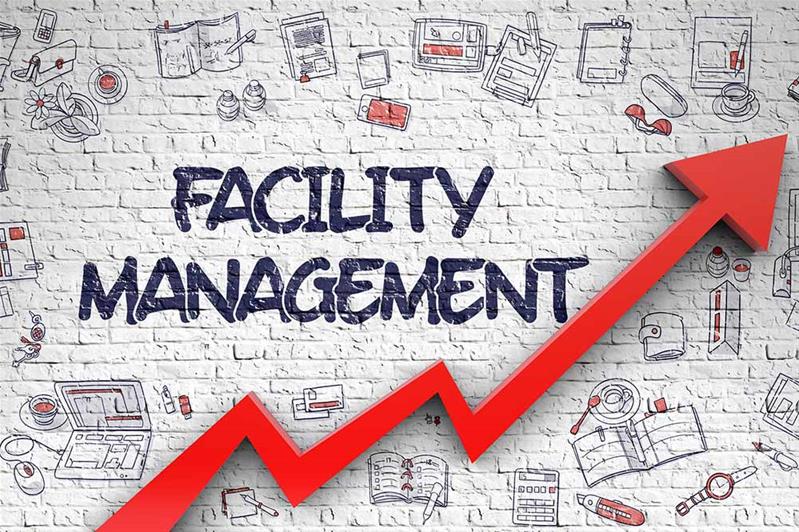Top Benefits of Total Facility Management for Streamlined Workflow
Total Facility Management (TFM) represents a calculated strategy to enhancing functional effectiveness by incorporating different services, such as maintenance and protection, under a unified management structure. The question remains: what certain advantages can companies harness from embracing TFM, and how might these benefits change their operational landscape?
Improved Functional Performance
Boosted operational efficiency is a key advantage of implementing total facility management (TFM) strategies. TFM incorporates a comprehensive strategy to managing a center's sources, processes, and framework, ultimately improving operations. By combining different services-- such as maintenance, security, cleaning, and room management-- TFM reduces redundancies and improves control among different functional features.
The assimilation of modern technology further enhances this efficiency. Advanced facility management systems provide real-time information analytics, enabling facility managers to make informed decisions that enhance process and source allotment. Anticipating maintenance techniques, for instance, anticipate equipment failures before they occur, lowering downtime and prolonging asset life-span.
In addition, TFM advertises standard processes throughout different divisions, making sure uniformity and high quality in service delivery. This harmony lowers operational interruptions and cultivates a much more collaborative workplace. Because of this, workers can concentrate on their core responsibilities, driving performance and improving overall efficiency.

Cost Reduction and Cost Savings
Executing total facility management (TFM) not just enhances operational effectiveness however likewise considerably adds to set you back decrease and savings. By combining different services under a solitary management structure, companies can eliminate redundancies and enhance procedures, thus minimizing operational prices. TFM makes it possible for better purchase approaches, enabling companies to work out bulk getting agreements with suppliers and company, causing reduced costs.
Furthermore, TFM stresses preventative maintenance, which lessens unexpected malfunctions and prolongs the lifespan of important tools. This aggressive approach not just minimizes repair prices yet likewise improves the dependability of facilitiess, making certain continuous operations. Additionally, energy effectiveness initiatives, often a key emphasis of TFM, cause considerable financial savings on energy bills, as facilitiess are maximized for decreased energy usage.
Improved Resource Management
Reliable resource management is a cornerstone of total facility management (TFM), enabling organizations to maximize the usage of their properties and workforce. By carrying out TFM approaches, companies can adequately assess their resource appropriation, making sure that every possession is made use of efficiently and efficiently. This alternative strategy enables for the identification of underperforming resources and the possibility for reallocation or enhancement.
In enhancement, TFM facilitates the combination of technology for real-time surveillance of resources, which assists in predicting maintenance needs and protecting against pricey downtime. By leveraging information analytics, organizations can make educated choices about resource implementation, eventually improving productivity and decreasing waste.
Additionally, TFM promotes a culture of continuous enhancement, urging teams to regularly assess and improve their source management methods. Total Facility Management. This positive position not only reduces functional interruptions however also fosters innovation, as browse around these guys staff members are encouraged to suggest enhancements based on their firsthand experiences with resource utilization
Streamlined Communication Channels
In total facility management, streamlined communication networks play a vital role in promoting collaboration and performance across groups. Effective interaction ensures that all stakeholders, consisting of facility managers, maintenance staff, and company, are lined up with functional needs and business objectives. By developing clear lines of interaction, teams can quickly resolve issues, share updates, and carry out solutions, consequently lessening downtime and boosting performance.
With systematized interaction platforms, information is easily obtainable, allowing for real-time updates on maintenance demands, source allocation, and task timelines. This transparency not just decreases misconceptions but also encourages staff members to make educated decisions rapidly. Moreover, streamlined communication assists in much better coordination throughout emergencies, making sure that all employees are informed and can react immediately.

Increased Concentrate On Core Activities
A crucial benefit of i was reading this total facility management is the boosted concentrate on core activities, enabling organizations to focus on their main business purposes - Total Facility Management. By outsourcing non-core features such as safety, cleaning, and maintenance, business can reroute their sources and power towards tactical campaigns that directly contribute to their competitive benefit and development
Total facility management integrates various functional tasks under a single umbrella, fostering effectiveness and decreasing redundancy. This combination not just simplifies procedures but additionally boosts accountability, making sure that every element of the facility operates sympathetically without drawing away focus from what absolutely matters-- core business functions.
In addition, this approach enables employees to dedicate their effort and time to jobs that drive technology and enhance consumer complete satisfaction, as opposed to getting stalled by operational obstacles. With a helpful site trusted facility management partner handling everyday operations, organizations can accomplish higher agility, respond swiftly to market adjustments, and keep a sharper focus on their goal.
Eventually, raised focus on core tasks results in improved general efficiency, enabling companies to reinforce their market position and accomplish their tactical objectives better. - Total Facility Management
Verdict
In verdict, Total Facility Management substantially boosts operational efficiency by settling vital services and leveraging data analytics for informed decision-making. Cost reductions and boosted resource management contribute to general savings, while structured interaction networks foster partnership among stakeholders.
Total Facility Management (TFM) represents a critical approach to enhancing operational efficiency by incorporating various services, such as maintenance and safety, under a unified management structure.Improved functional performance is a key benefit of implementing total facility management (TFM) methods. Advanced facility management systems provide real-time information analytics, making it possible for facility supervisors to make educated choices that improve operations and source allotment.Executing total facility management (TFM) not only enhances functional efficiency however likewise considerably adds to cost decrease and financial savings.Efficient resource management is a cornerstone of total facility management (TFM), making it possible for companies to optimize the use of their possessions and workforce.